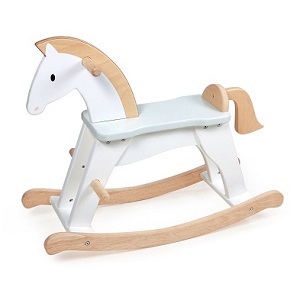A Stroll Through Time: Traditional Toys of Yesteryear
‘Tis the season to be jolly! And as we don our festive jumpers and sip on hot cocoa, let’s take a stroll down the snowy lanes of England. Especially to uncover the enchanting tale of Christmas. Together with the age-old question: Why children receive gifts on this magical Christmas day?

A Glimpse into the Past: Toys of Yore – Why Children Get Gifts at Christmas
Firstly, let’s dive into the rich tapestry of English Christmas traditions. Which have stood the test of time like ancient yuletide sentinels. Picture a quintessential English Christmas. Complete with crackling log fires, twinkling fairy lights, and the fragrant scent of mince pies wafting through the air.
In days gone by, children eagerly unwrapped simple yet cherished toys. Like wooden dolls and ragdolls, tin soldiers, and handmade rocking horses. These timeless playthings captured the imaginations of generations, fostering creativity and joy in the hearts of the little ones.



The Evolution of Christmas Gifts: Then and Now
Now, let’s unwrap the mystery behind the tradition of giving gifts to children at Christmas. Significantly, Christmas celebrations, dating back to the Neolithic period, held practices of gift-giving during the Winter Solstice. Explore the roots of this tradition, from gifts hung on trees as offerings to ancient Gods to the Victorian era. Where Queen Victoria herself established the tradition of exchanging lavish gifts among upper-class families. Centuries ago, during the Victorian era, a transformation occurred that forever altered the way Christmas was celebrated. The emergence of Queen Victoria’s German-born husband, Prince Albert, brought with it the custom of decorating Christmas trees. This charming tradition, coupled with the exchange of thoughtful gifts, quickly gained popularity among the British aristocracy.
Unveiling Ancient Gift-Giving: Saturnalia in Rome and Victorian Opulence
Travelling back through the annals of time, we uncover more of the rich history of gift-giving. Explicitly, tracing its roots to the celebration of Saturnalia in ancient Rome. This festive period, coinciding with the Winter Solstice, was a homage to Saturn, the Roman God of agriculture and time. Romans marked this occasion by exchanging gifts, with Sigillaria being a notable highlight. During this phase, loved ones received small terracotta figurines as a symbol of goodwill and fortune. Certainly a tradition that endured over the years.
Fast forward through time, and we find a resonance with the Victorian era in England. Queen Victoria, a trendsetter among the upper-class families, established the tradition of exchanging lavish gifts during Christmas. The opulence of this era is immortalized in Queen Victoria’s diaries. Where she chronicled the extravagant gifts she received—ranging from exquisite jewellery to captivating art and paintings.
Thus, the thread of gift-giving, woven through the tapestry of time, connects ancient Rome’s Saturnalia to the lavish traditions of Victorian England. This historical journey underscores the enduring significance of sharing gifts as a timeless expression of goodwill and festive celebration.


Modern Marvels: The Diverse Array of Gifts Today – Why Children Get Gifts at Christmas
Fast-forward to the present day, and the types of toys adorning the Christmas tree have evolved significantly. For example, the recently shown BBC Antiques Roadshow Toys and Christmas Special highlighted the changes through the years. From high-tech gadgets to interactive educational games, the choices are as diverse as the interests of the children themselves. Electronic devices, action figures of beloved characters, and virtual reality experiences now share the spotlight with traditional wooden toys. Thereby, offering a blend of nostalgia and innovation.

The Origin of Santa Claus: Unravelling the Story of St. Nicholas
In the prelude to Santa Claus donning his iconic red suit and residing at the North Pole, historical accounts point to the inspiration behind the beloved figure: Saint Nicholas. Namely, the patron saint of children. While the veracity of the tales surrounding St. Nicholas remains unconfirmed. His narratives have significantly shaped our contemporary perception of Santa Claus.
St. Nicholas, renowned for his philanthropy, gained acclaim for bestowing secret gifts upon those in need. A legendary act attributed to him involved dropping gold down chimneys, a whimsical method of presenting unexpected gifts to individuals. The enduring belief in the existence of this mystical figure found widespread popularity through tales and poems. Works such as ‘The Night Before Christmas’ and ‘The Friend of Children’ prominently featured references to Santa Claus. Thus, embedding his enchanting presence in our modern Christmas celebrations.
Global Gift-Giving Traditions: A Worldwide Tapestry
The act of exchanging Christmas presents unfolds uniquely worldwide, diverging from the traditions ingrained in Western culture. Journeying through continents, we discover fascinating variations that add a global tapestry to the festive season.
In China, a customary practice involves gifting apples wrapped in vibrant paper. Which symbolize good fortune and peace—a departure from the Brazilian tradition of Amigo Secreto. In Brazil, friends exchange small presents throughout the Christmas season, unveiling their identities only on the much-anticipated Christmas day.
Across the African continent, Christmas revolves around attending church. Yet the spirit of giving persists as gifts are bestowed upon the less fortunate. Venturing into Europe, diverse traditions abound. At the same time, Russian children serenade with songs in exchange for presents. While in Denmark, a unique tradition involves presenting gifts to animals, delivered by the Julemanden.
In the enchanting land of Iceland, the festive Jólabókaflóð tradition takes center stage. Here, an exchange of books on Christmas Eve is followed by an evening of shared reading—a celebration that highlights the cultural significance of literature.
Beyond these examples, a myriad of Christmas traditions from around the world unfolds. Each possessing its unique charm and captivating stories. As we explore these diverse customs, we gain a deeper appreciation for the rich tapestry of global celebrations. That make Christmas a truly magical and culturally enriching experience.

The Heart of the Tradition: Joyful Giving Through the Ages
Transitioning through time, the act of giving presents to children during the Yuletide season became deeply ingrained in English Christmas festivities. Especially wooden toys. The notion of spreading joy and goodwill inspired the tradition of gift-giving. As a result, symbolizing the spirit of generosity and love that defines the holiday season.
Intriguingly, the origin of why children get gifts at Christmas is rooted in historical and religious significance. The story of the Three Wise Men presenting gifts to the infant Jesus in Bethlehem served as an early inspiration for the practice. Over time, this biblical narrative evolved into the widespread custom of bestowing gifts upon loved ones. Especially the little ones who embody the spirit of innocence and wonder.
Navigating the Present Predicament: How Many Gifts Should Children Get?
For parents facing the dilemma of deciding how many presents to gift their children, various approaches exist. Dive into common rules such as prioritizing quality over quantity. In particular, following the rule of three inspired by the gifts to baby Jesus. Or embracing the gift of four to teach children valuable lessons about wants and needs.
Cherished Traditions: Beyond the Presents
As we embrace the festive spirit, it’s delightful to explore some traditional English Christmas activities that continue to captivate hearts young and old. Carol singing, with voices harmonizing beneath the glow of lamplight, is a cherished tradition that resonates throughout quaint English villages and towns. The melodies of timeless carols create an atmosphere of joy, warmth, and community.
Another beloved tradition is the Christmas Day feast. Where families gather around a table laden with succulent roast turkey, crispy roast potatoes, and all the trimmings. The indulgence in Christmas pudding, adorned with a sprig of holly, adds a sweet finale to this culinary celebration.



Unveiling the Tapestry: A Conclusion of History and Magic
In conclusion, the age-old question of why children get gifts at Christmas in England unveils a rich tapestry. Being woven with history, love, and tradition. From the enchanting Victorian customs introduced by Prince Albert. To the enduring spirit of generosity inspired by the Three Wise Men. Consequently, the act of giving to children during the festive season symbolizes the magic and wonder of Christmas.
So, as we wrap our presents with care and hang stockings by the chimney with glee, let’s continue to embrace the heartwarming traditions that make an English Christmas truly special. After all, the joy of giving is a gift in itself. And the wonder of the season is best experienced through the wide-eyed smiles of children eagerly unwrapping the magic of Christmas morning.
